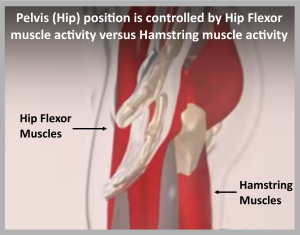Right-Side Dominance and it's Relationship to Function and Performance
While most people are aware of the physical differences between being right-handed and left-handed, being right-side dominant could mean much more.
The Postural Restoration Institute® (posturalrestoration.com) was established to explore and explain the science of postural adaptations, asymmetrical patterns and the influence of polyarticular chains of muscles. They have determined that right-side dominance (or a biomechanical imbalance) is reinforced by the placement of organs within the body which can cause the left pelvis to tilt forward more than the right pelvis, due to over-activation of the hip flexor muscles, and under-activation of the hamstring muscles. They have developed their own certified exercise program to help influence proper muscle activation and alignment.
According to Frank Joutras, president of Protonics1, a company that has patented fitness and rehab products based on correcting biomechanical balance; “We believe the key to staying in a balanced position, is to control the position of the left pelvis during motion by preventing over-activation of the hip flexors, and under-activation of the hamstrings. These are the two major muscle groups that have the most influence on the position of the pelvis. When this happens, it can cause the rest of the body to compensate, which can then result in misalignment, reduced function and limited performance."
What makes this issue even more concerning is that many individuals may not even realize they are right-side dominant. This is because being right-handed is often seen as the norm, and left-handed individuals are often forced to adapt to a right-handed world. As a result, the possible effects of right-side dominance can go unnoticed for years.
To help prevent this, individuals need to know the signs of right-side dominance, then take preventative steps to ensure they are in a balanced state as much as possible prior to beginning activity. Jon Schultz MPT, ECS, OCS, PRI, an expert in gait, sports specific training and rehabilitation at Optimum Performance PT in Iowa, has indicated that the possible signs of right-side dominance could include;
* Starting to walk with the left leg. Struggles to initiate a step with the right leg (weight shifted to that side).
* Minimal or No right arm swing.
* Right shoulder/chest lower than left shoulder (scapula depressed on right side).
* One or both legs turn out when sitting, standing and lying.
* Overdevelopment of compensatory muscles (lats, anterior neck, lateral thigh).
* Favorable standing position is on the right leg while rotating their upper body to the left.
* Asymmetry of the head and face.
* Anterior tilted left pelvis and possible curvature of the spine.
* Hyper-extended left hamstring and tight IT band.
* Knee, lower back, sciatic, or shoulder pain.
Simple exercises and stretches may help correct these imbalances and prevent potential health issues. In addition, devices like Protonics®, that are used as a warm-up on the left side prior to activity, have been proven3 to inhibit the muscles that over-activate and tilt the hip forward, while activating the hamstring muscles which pulls the hip backwards. Physical therapy and chiropractic manipulation can also be effective in changing this pattern through a continuous maintenance program.
Frank E. Joutras
Protonics
+1 833-562-7200
support@protonics.com
Visit us on social media:
LinkedIn
1 http://www.protonics.com
2 https://pmc.ncbi.nlm.nih.gov/articles/PMC6670056/
3 https://www.protonics.info/copy-of-clinical-studies

